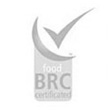Sesame
(Sesamum indicum)
Sesame – Ingl., Sesam – Ted., Sésame – Fr, Sésamo – Sp., Кунжут, сезам - Russ.
Sesame belongs to the Pedaliacee family, and is native to Asia and Africa. It is cultivated mainly in India, but also in China, Sudan, Uganda, Egypt, Mexico, Japan, Persia, Syria, Turkey, Greece. Its fruit are capsules-shaped, 2 cm long, divided into four lodges in which there are small seeds.
white hulled sesame seed, and color sorted.
Food Composition
The sesame oil seeds contain about 50% of oils, mostly unsaturated fats like omega 3 and omega 6. Sesame seeds are also rich in vitamin E, D and B vitamins, calcium, phosphorus, iron, zinc, selenium.
Culinary Use
Sesame seeds help the immune system and are effective in the prevention of osteoporosis, are a great natural remedy for menstrual problems(like pink pepper), nausea, vomiting.
Unsaturated fats of omega 3 and omega-6 prevents the onset of cardiovascular disease.
The seeds and sesame oil helps children ‘s development, but must be given no earlier than the second year of life.
Sesame in fact is a serious allergen, so it has to be used with caution to more sensitive people.
Healing Effect
Sesame seeds are widely used in Indonesian and Japanese cuisine. In Arab countries the famous Sesame tahini is prepared to flavor the humus. Sesame seeds are also used to decorate and enhance the nutritional level in bakery, bread, salads and to cook chicken in breadcrumbs. It is also used for sweet preparations, as well as oil seed. Hulled seeds, or coated, are both traded to be used according to different production requirements.
Preservation
Sesame seeds must be kept in a cool, ventilated, poorly lit and dry place.





